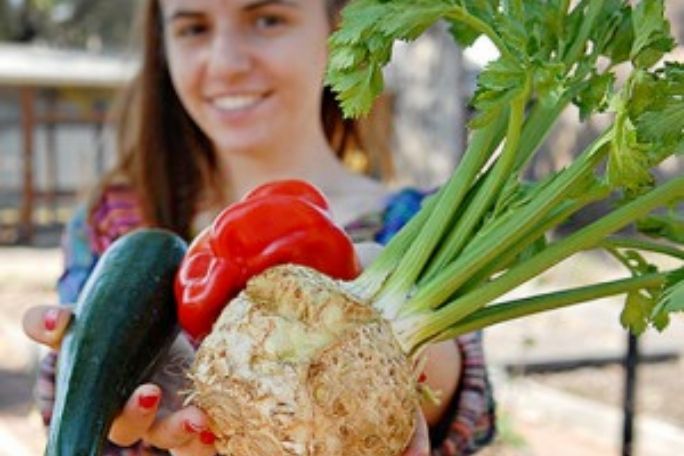Lesson summary
The Enviroweek Green Thumb Action encourages students to create and care for green spaces. Students will be inspired to increase schoolyard biodiversity, plant veggie gardens and care for existing green spaces. This resource is structured in three parts, comprising three individual activities.
Part 1 – Tune In: Students use aerial maps to explore green spaces in their school neighborhood. They consider the amount of natural habitat compared to urban landscapes in their locality.
Part 2 – Act: Students plan and develop their own Green Thumb Challenge by “greening up” an area of their school.
Part 3 – Share: Students share their experiences and inspire others to take action.
Learning intentions:
Students will...
- build skills in using an aerial map to review and estimate the amount of green space in the local area
- begin to form opinions about land use
- identify why some areas are more likely than others to be dedicated to green space
- distinguish between different kinds of green space.
Lesson guides and printables
Lesson details
Curriculum mapping
Australian curriculum content descriptions:
Year 7 Science:
- Identify questions and problems that can be investigated scientifically and make predictions based on scientific knowledge (ACSIS124)
Year 7 English:
- Plan, rehearse and deliver presentations, selecting and sequencing appropriate content and multimodal elements to promote a point of view or enable a new way of seeing (ACELY1720)
- Plan, draft and publish imaginative, informative and persuasive texts, selecting aspects of subject matter and particular language, visual, and audio features to convey information and ideas(ACELY1725)
Year 8 Science:
- Identify questions and problems that can be investigated scientifically and make predictions based on scientific knowledge (ACSIS139)
Year 8 English:
- Plan, rehearse and deliver presentations, selecting and sequencing appropriate content, including multimodal elements, to reflect a diversity of viewpoints (ACELY1731)
- Create imaginative, informative and persuasive texts that raise issues, report events and advance opinions, using deliberate language and textual choices, and including digital elements as appropriate (ACELY1736)
Year 9 Science:
- Formulate questions or hypotheses that can be investigated scientifically (ACSIS164)
Year 9 English:
- Plan, rehearse and deliver presentations, selecting and sequencing appropriate content and multimodal elements for aesthetic and playful purposes (ACELY1741)
- Create imaginative, informative and persuasive texts that present a point of view and advance or illustrate arguments, including texts that integrate visual, print and/or audio features (ACELY1746)
Year 10 Science:
- Formulate questions or hypotheses that can be investigated scientifically (ACSIS198)
Year 10 English:
- Plan, rehearse and deliver presentations, selecting and sequencing appropriate content and multimodal elements to influence a course of action (ACELY1751)
- Create sustained texts, including texts that combine specific digital or media content, for imaginative, informative, or persuasive purposes that reflect upon challenging and complex issues (ACELY1756)
Syllabus outcomes: SC4-4WS,SC5-4WS, EN4-4B, EN5-1A, EN5-2A.
General capabilities: Critical and creative thinking, Literacy.
Cross-curriculum priorities: Sustainability OI.2, OI.7.
Resources required
- For the ‘Tuning in’ activity – Internet access to Google Maps or Flash Earth and a printer
Additional info
This is an original Cool.org lesson. Facts and figures in these lessons may have changed since this lesson was published. We always endeavour to update our resources in a timely manner, but if you see an error or issue in our resources please get in touch with us.


Welcome back!
Don't have an account yet?
Log in with:
By signing up to Cool.org you consent and agree to Cool's privacy policy to
store, manage and process your personal information. To read more, please see
our privacy policy here(Opens in new tab).
Create your free Cool.org account.
Many of our resources are free, with an option to upgrade to Cool+ for premium content.
Already have an account?
Sign up with:
By signing up to Cool.org you consent and agree to Cool's privacy policy to
store, manage and process your personal information. To read more, please see
our privacy policy here(Opens in new tab).